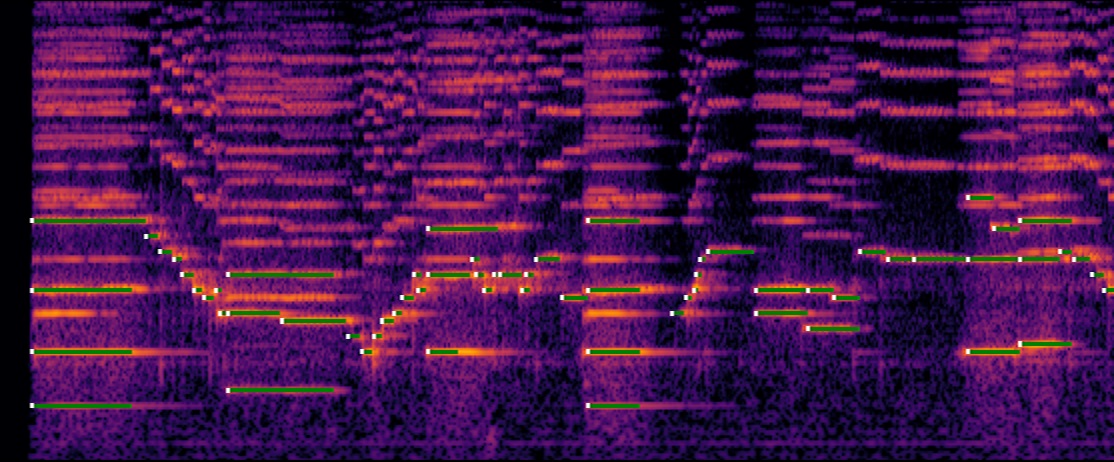University of California San Diego
Alignment Process
The source code for creating this dataset can be found in this GitHub repository.
Below we describe how we derive the alignment between a musical score and a recording. We will use the following score and recording as an example.

Here is the alignment result of this example, where white dots and green lines show the estimated note onsets and durations.

Step 1 – Process the score
We first transform the musical score into a note sequence, stored as a CSV file as follows.
onset,offset,pitch,velocity
0,24,55,64
0,24,62,64
0,24,70,64
0,27,79,64
27,30,77,64
30,33,75,64
33,36,74,64
36,39,72,64
39,42,70,64
...
Step 2 – Synthesize the score
We then synthesize the score using FluidSynth, an open-source software synthesizer, with the MuseScore General soundfont.
Step 3 – Align the score to the recording
Finally, we perform dynamic time warping (DTW) on the constant-Q spectrogram of the synthesized audio and that of the recording.
Here is the resulting cost matrix we get from DTW. At the top is the recording, and at the left is the synthesized audio

And here is the optimal warping path.

This optimal warping path encodes the alignment between the scores and the recordings. We can then use this alignment to obtain the start and end time of each note as follows.
start,end
0.96,3.68
0.96,3.68
0.96,3.68
0.96,4.032
4.064,4.384
4.416,4.768
4.8,4.992
4.992,5.312
5.344,5.568
...